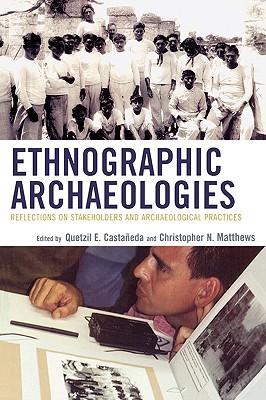
- We will send in 10–14 business days.
- Publisher: Altamira Press
- ISBN-10: 0759111359
- ISBN-13: 9780759111356
- Format: 15.2 x 22.7 x 1.4 cm, minkšti viršeliai
- Language: English
- SAVE -10% with code: EXTRA
Ethnographic Archaeologies (e-book) (used book) | bookbook.eu
Reviews
Description
Ethnographic archaeology has emerged as a form of inquiry into archaeological dilemmas that arise as scholars question older, more positivistic paradigms. Ethnographic Archaeologies describes diverse methods, objectives, and rationalities currently employed in the making of engaged and collaborative archaeological research.The contributors to this volume, for example, understand ethnographic archaeology variously as a means of critical engagement with heritage stakeholders, as the basis of public-policy debates, as a critical archaeological study of ethnic groups, as the study of what archaeology actually does (as opposed to what researchers often think they are doing) in excavations and surveys, and as a foundation for transnational collaborations among archaeologists. What keeps the term ethnographic archaeology coherent and relevant is the consensus among practitioners that they are embarking on a new archaeological path by attempting to engage the present directly and fundamentally.
EXTRA 10 % discount with code: EXTRA
The promotion ends in 22d.04:27:09
The discount code is valid when purchasing from 10 €. Discounts do not stack.
- Publisher: Altamira Press
- ISBN-10: 0759111359
- ISBN-13: 9780759111356
- Format: 15.2 x 22.7 x 1.4 cm, minkšti viršeliai
- Language: English English
Ethnographic archaeology has emerged as a form of inquiry into archaeological dilemmas that arise as scholars question older, more positivistic paradigms. Ethnographic Archaeologies describes diverse methods, objectives, and rationalities currently employed in the making of engaged and collaborative archaeological research.The contributors to this volume, for example, understand ethnographic archaeology variously as a means of critical engagement with heritage stakeholders, as the basis of public-policy debates, as a critical archaeological study of ethnic groups, as the study of what archaeology actually does (as opposed to what researchers often think they are doing) in excavations and surveys, and as a foundation for transnational collaborations among archaeologists. What keeps the term ethnographic archaeology coherent and relevant is the consensus among practitioners that they are embarking on a new archaeological path by attempting to engage the present directly and fundamentally.


Reviews